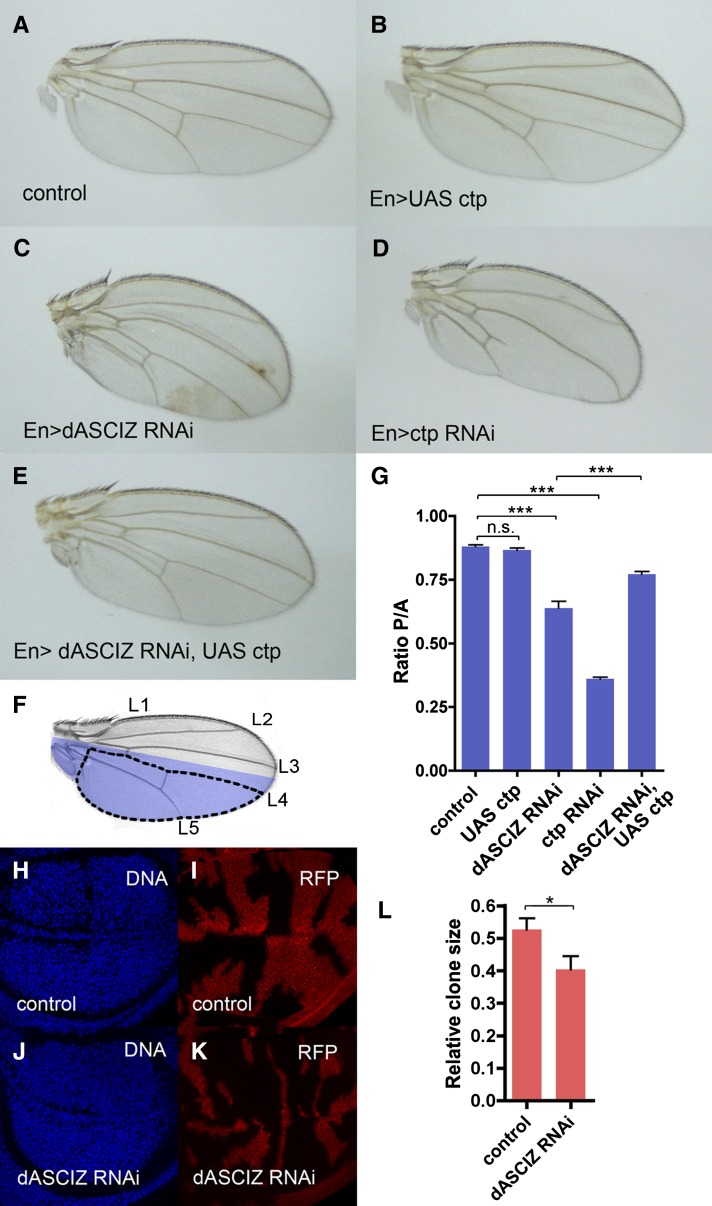Figure 2.
The dASCIZ RNAi wing phenotype is phenocopied by Ctp knockdown and rescued by Ctp overexpression. (A–E) Representative images of male adult wings with Engrailed–GAL4 (En) driver. (A) Control En–GAL4/+. (B) En > UAS–Ctp overexpression. (C) En > dASCIZ RNAi. (D) En > Ctp RNAi. (E) En > dASCIZ RNAi with En > UAS–Ctp overexpression. (F) Adult wing showing En expression domain in blue and longitudinal veins (L1–5). For quantitation, the area posterior to L4 was used as a measure of the posterior compartment, PC (dotted line), and the area anterior to L4 was used to measure the anterior compartment, AC. (G) Quantification of wing size using the ratio PC/AC as defined in (F). Error bars represent SEM for n > 10. PC/AC ratio is unchanged for UAS–Ctp (P = 0.2446), reduced for dASCIZ RNAi compared to control (P < 0.0001), and reduced for Ctp RNAi (P < 0.0001). Coexpression of dASCIZ RNAi with UAS–Ctp improves the ratio compared to dASCIZ RNAi alone (P = 0.0003). All quantifications were performed using male wings; analogous phenotypes were observed in female wings (data not shown). RFP marked flip-out clones for control (H and I), dASCIZ RNAi (J and K), and quantification of average clone size relative to the total wing disc area (L).

